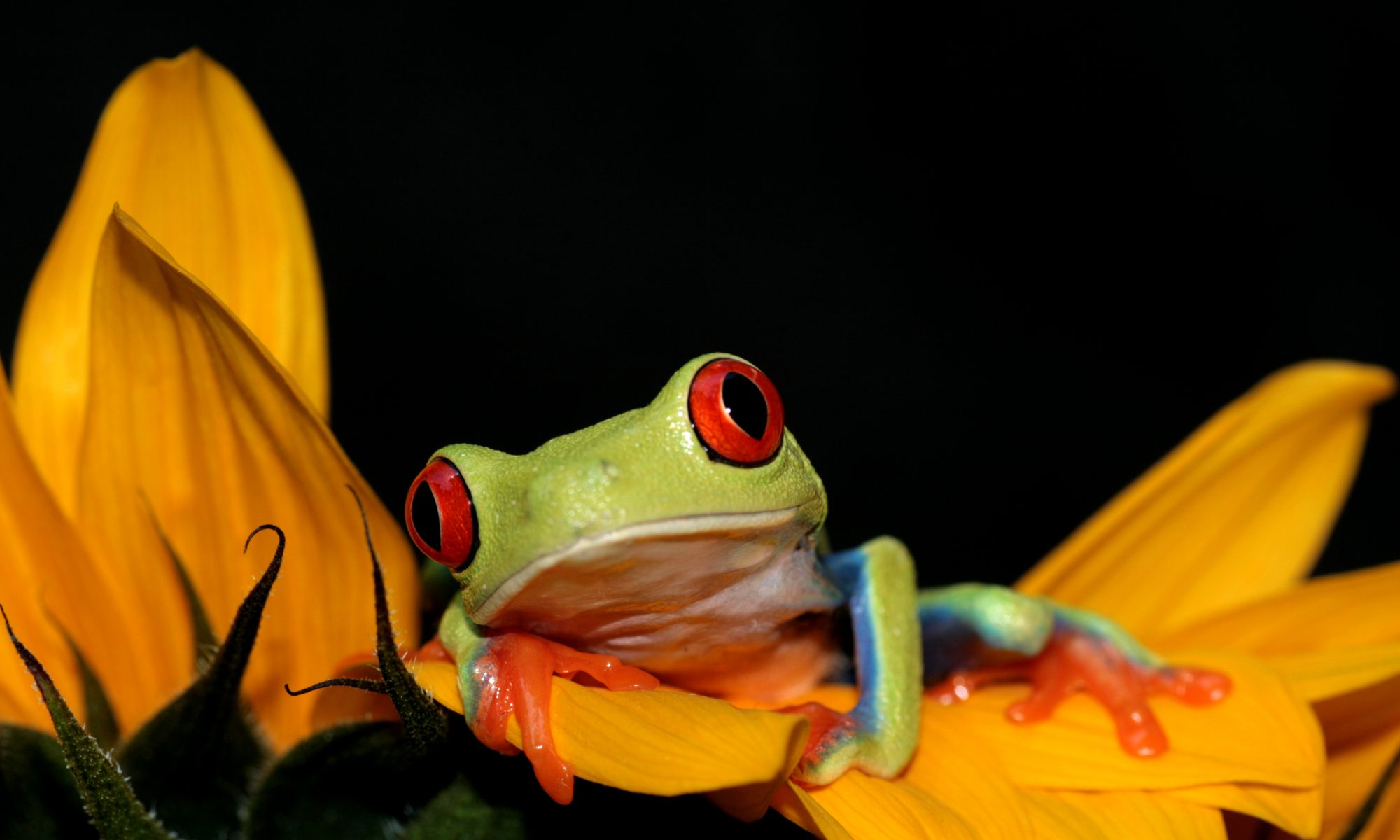UF’s David Blackburn unlocks the frog Tree of Life.
Among UF’s renowned team of extinction experts is David Blackburn, whose appreciation for frogs has led to his work on a groundbreaking new study. A paper published in July in the Proceedings of the National Academy of Sciences shows that although frogs have been around for longer than dinosaurs, most of the world’s 6,700-plus living species of frogs evolved after a mass extinction 66 million years ago made way for new biodiversity.
Perhaps best known among mass extinctions, if not actually the most devastating, is the one that killed the dinosaurs. This event, called the Cretaceous–Tertiary extinction (K–T for short, to remind you that “Cretaceous” has a hard C), or more precisely the Cretaceous–Paleogene (K–Pg) extinction, caused a global die-off of 75 percent. Evolutionarily, these closed doors allowed others to open. Frogs, a highly adaptive type of creature, occupied many new niches, especially those created by a bloom of angiosperms, or flowering plants. Frogs took to the trees, which well suited their reproductive and self-defense needs.
This new analysis shows that the frog family tree’s new crop of branches spread out from the extinction event between the Cretaceous and Paleogene periods — the K–Pg boundary, formerly called K–T — not 100 million years ago. The results were surprising to both the researchers and the scientific community, because previous mitochondrial DNA analysis traced major extant frog lineages to about 35 million years earlier than the K–T extinction, in the middle of the Mesozoic era.
Frogs also took on very different forms, with some retaining the commonly known tadpole stage and others evolving direct development, in which minuscule frogs hatch out of the eggs. They now occupy a wide range of habitats, from semi-arid regions of Africa to the super-humid South American rainforests, from clumps of leaves on the forest floor to the tops of trees.
David Blackburn is the Associate Curator of Herpetology at the Florida Museum of Natural History and an Affiliate Professor of Biology in the College of Liberal Arts and Sciences. He also is part of the Tropical Conservation and Development program, the School of Natural Resources and Environment, and the Center for African Studies.
Visit the Blackburn Lab website.
See this story and photography at Exposure.
